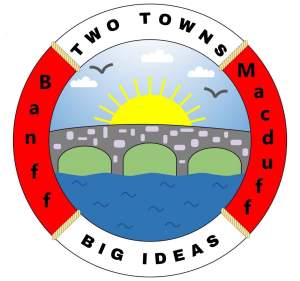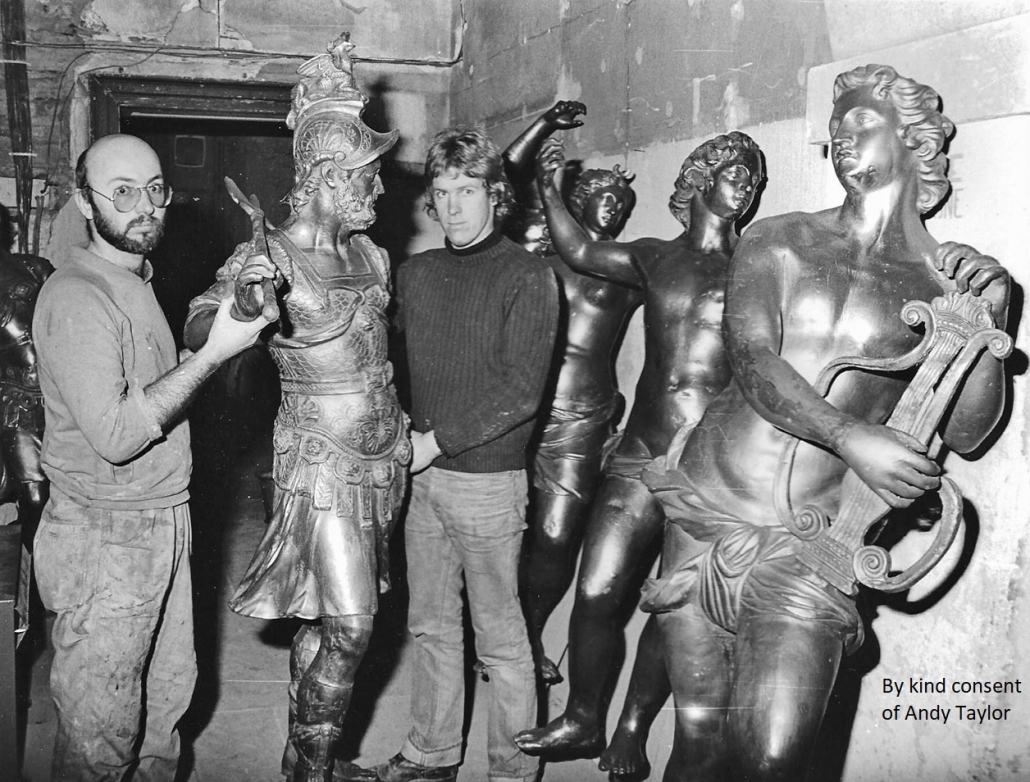Across each of the front and back of Duff House there are three statues. On the front of the house, the south with the horseshoe stairs, are from left to right, Mars, Apollo and Minerva; and at the back as you face it from left to right, are Bacchus, Mercury and Diana. (NB, the Guide Book has Apollo and Bacchus swapped in it’s text!).
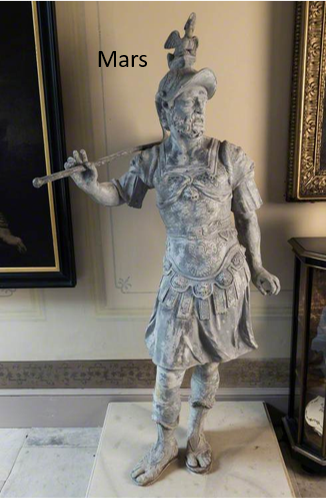
Lead statue of Mars originally on the front of Duff House now on display on 1st Floor 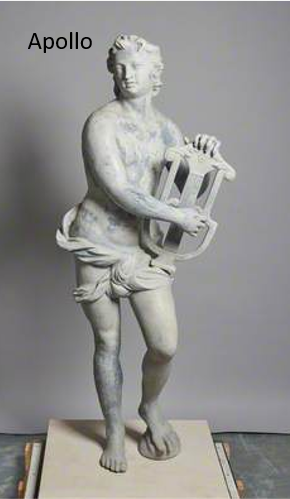
Glass fibre statue of Apollo before putting in place on the outside of the House in 1995 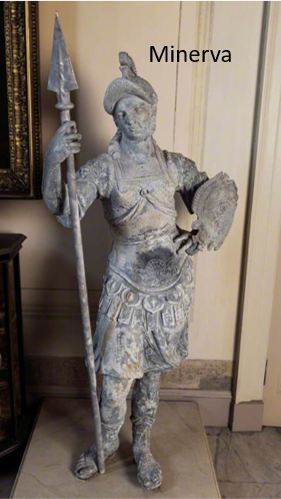
Lead statue of Minerva originally on the front of Duff House now on display on 1st Floor
These have an interesting history. They were originally made as outdoor statues to decorate the Bowling Green at Airlie House, now the lower part of what is called Airlie Gardens. This austere building and land was bought by the Duffs, and in 1743 we know the statues were moved to Duff House, where they have been placed above the pediment.
These statues were made of lead and are very fine work indeed. Today, the versions on the outside of Duff House are glass fibre reproductions erected in 1995 when the whole House was refurbished, but the quality of the originals can be seen on the two original lead statues (Mars and Minerva) now displayed at the bottom of the Grand Staircase on the 1st floor. The other four have all been refurbished but are in storage.
In the early nineteenth century they were apparently painted white; whether this was for protection or some other reason is not known, but it seems it all wore off!
There is also a first-hand story by a local resident that the statues may have been stored on the roof in the ‘40s and early 50’s, but we do know that by 1953 they were in place.
Mars – God of war, rage and passion
Apollo – God of prophecy and politics, patron of musicians, poets and doctors
Minerva – God of wisdom, war, the arts, industries and trades
Bacchus – God of wine, viniculture, creativity and revelry
Mercury – God of commerce, communication and travel
Diana – Goddess of the hunt, the moon and the underworld
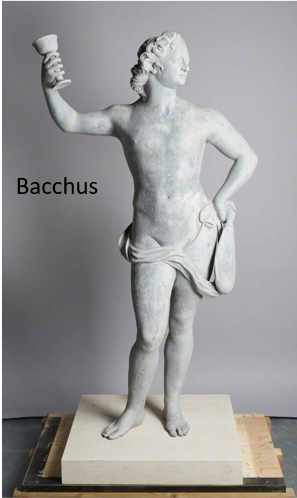
Glass fibre statue of Bacchus before putting in place on the outside of the House in 1995 
Glass fibre statue of Mercury before putting in place on the outside of the House in 1995 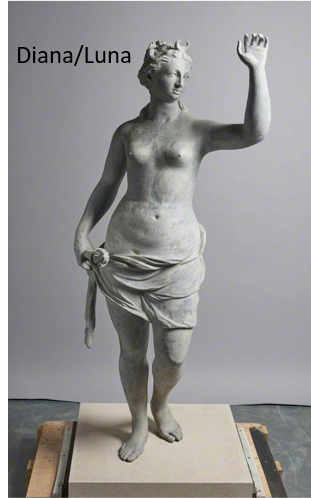
Glass fibre statue of Diana before putting in place on the outside of the House in 1995
The statues are attributed to a sculptor, Jan van Nost. Some people attribute them to Jan van Nost the Elder (who died circa 1729) and others to Jan van Nost the Younger, his nephew, who may have made them in about 1740. An interesting further fact however is that the 1743 account refers to the statues for Duff House, but also for “the temple”. The only temple for Duff House is “Temple of Venus” on the top of Doune Hill, and just by the name the other statue therefore must have been of Venus! Sadly, the whereabouts of this statue are unknown.
